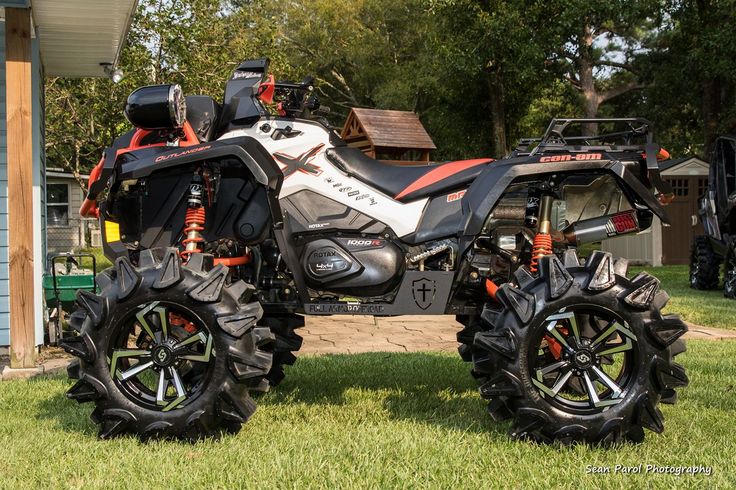July 7, 2011
by Brent McNamee
The history of the All-Terrain-Vehicle as we know it today is closely tied with the history of Honda. Honda has been the world's largest motorcycle manufacturer since 1959. During the gas shortage in WWII, Soichiro Honda (Honda's founder) was unable to use his car so he had the novel idea of attaching a small engine to his bicycle.
His idea gained widespread popularity and he established the Honda Technical Research Institute in Hamamatsu, Japan, to develop and produce small 2-cycle motorbike engines. Over 18,000 bicycle shop owners across Japan took part in the research, an initiative that helped bring together a nation torn apart by war. Thanks to this research institute Honda would pave the way for the modern ATV.
Here is how ATVs have evolved through time.
Though Honda would become the most popular ATV brand later on, the very first ATV was actually developed in 1961 in Toronto, Canada and called the Jiger. The Jiger was a 5 1/2 horsepower, 200 pound, 6-wheeled amphibious ATV, meaning the vehicle could travel on land and water. The first Jigers built for sale were all built to order.
Prospects for the product included sportsmen and the military. The Jiger was marketed as a "Go Anywhere Vehicle" and began being mass produced in 1965. Despite its popularity, the company’s financial troubles caused production to end in 1968.
In 1967, American Honda asked one of its engineers, Osamu Takeuchi, for a new product that dealers could sell when motorcycle sales cooled off in the winter. Takeuchi drafted many design ideas, vehicles with 2 wheels, 3, 4, 5, and even 6-wheeled models like the Jiger. Out of all the designs, the 3-wheeled concept far outweighed two wheelers in snowy, slippery or muddy conditions and also provided better maneuverability.
The challenge was finding tires that would actually get a grip on soft terrain like snow.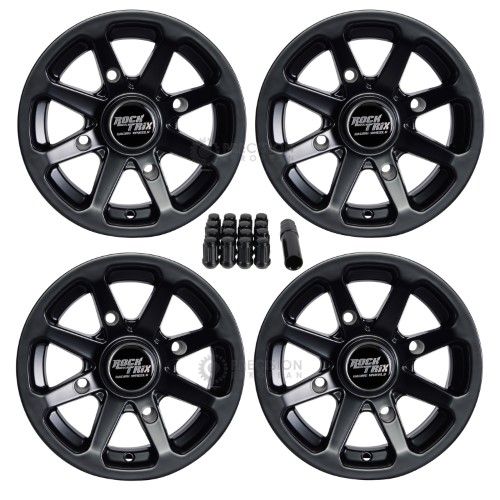
Honda then sent Takeuchi an invention called the Amphi-Cat, with six, 20-inch, low-pressure, high-flotation balloon tires. (The Amphi-Cat was actually the Moon Buggy in the British television series Space: 1999 pictured below)
Takeuchi’s tires would tack on another 2 inches to make 3 full 22-inch, low pressure balloon tires. Those tires allowed the vehicle to go places others couldn't, leaving little or no damage in their passing.
Honda brought the world’s first ever three-wheeled ATV or rather ATC (All-Terrain-Cycle) to the United States in 1970 and it was a hit. It was marketed and sold as a recreational vehicle and was famously portrayed in the James Bond movie Diamonds Are Forever, as well as popular TV shows like Magnum P.I and Hart to Hart. The three-wheeled US90 had a seven horsepower engine and sold for $595.
Honda released the ATC 70 a smaller version of the ATC 90 intended for youngsters.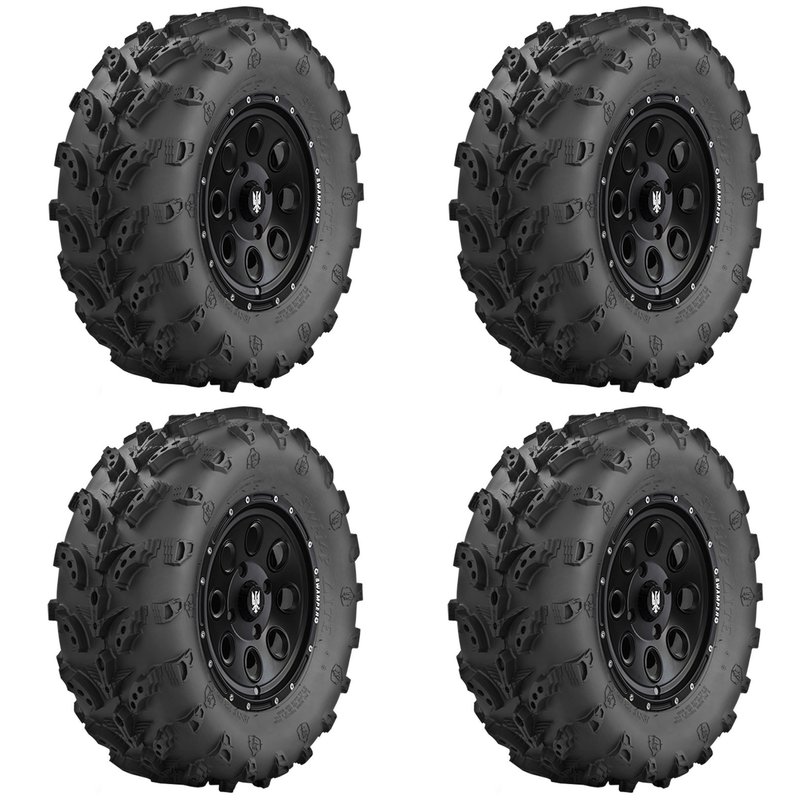
Though ATVs were originally targeted towards sportsmen until the 70's gas crunch when customers began purchasing them as utility vehicles for agriculture and farming purposes. This was because ATVs cost exponentially less than a tractor, and guzzled only 8 percent of the fuel needed to feed a tractor.
By the 1980s ATV demand was at an all-time high and they became multi-purpose machines serving both recreational and utility purposes
Honda's first official ATC racing participation came in the 1981 Parker 400 race held in the Arizona desert where it came in first.
With the widespread popularity of ATVs also came an increase in accidents and injuries, particularly among adolescents and children. This prompted an investigation by the Consumer Product Safety Commission (CPSC) in 1984. By 1986, their statistics suggested that most ATV accidents were due to improper rider behaviour rather than actual vehicle design.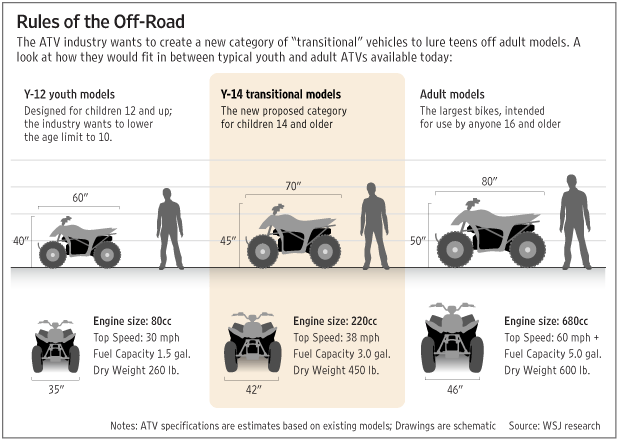
Nevertheless, on April 28, 1988, U.S. ATV distributors signed a 10-year agreement with the CPSC called the Final Consent Decree upon which the ATV industry made a $100 million commitment to expand existing ATV safety courses and programs. Among the many components of this agreement, ATV distributors had to offer free training and training incentives to owners and purchasers of new ATVs.
This agreement also marked the end of three-wheelers on the ATV market.
In 1982, Suzuki introduced the first 4-wheeled ATV called the QuadRunner 125 (pictured below). It came equipped with an odometer, five forward speeds and reverse! This quad paved the way for the 4-wheel ATV revolution.
In 1985, Suzuki took the ATV world by storm when it introduced the first high-performance 4-wheel ATV, the Suzuki LT250R QuadRace (below).
Meanwhile, Honda was working on its own 4-wheeled concept. After scrutinizing research, testing the prototypes with riders wearing 50-pound instrument packs that recorded information on every aspect of the machine’s operation, they unleashed their beast in 1984 known as the FourTrax TRX250R (below).
To this day, the FourTrax 250R continues to win awards for its performance.
1984 was Honda's biggest sales year for ATVs. 370,000 units were delivered making up 69 percent of total ATV sales in the U.S. that year.
In 1986, Honda unveiled the first four-wheel-drive ATV, the FourTraxª 350 4x4. For its grand unveiling it was lowered from a helicopter to show all four wheels moving under their own power.
This model would ultimately become the most versatile and popular ATV in history.
ATVs have become more than recreational vehicles and have stood the test of time as vital tools in a wide range of industries from farming, agriculture, hunting, industry, ranching but also an important means of mobility for people with disabilities.
Interestingly, many of the uses and application for ATVs have sprung from their owners, who have helped shape their growth and design along the way.
The history of ATVs is a fascinating one—full of more twists and turns than a powersports racing track. We’ve gathered up some intriguing bits of ATV history below. If you want to grab your own piece of history, shop the four-wheelers for sale at Langston Motorsports. Our dealership is located in Perris, California, and we also serve those in Temecula and Orange County.
We’ve gathered up some intriguing bits of ATV history below. If you want to grab your own piece of history, shop the four-wheelers for sale at Langston Motorsports. Our dealership is located in Perris, California, and we also serve those in Temecula and Orange County.
Originally, the term "ATV" referred to an entirely different powersports vehicle. It was the nickname for amphibious 6-wheeled vehicles such as the Jiger, Amphicat, and Terra Tiger. With these models, riders sat in a seat instead of straddling a seat. When the straddle-ridden powersports vehicles emerged, they took over the name "ATV" and the original models became known as AATVs (amphibious all-terrain vehicles).
ATVs as we think of them trace their history to a 1967 college graduate project. John Plessinger was enrolled at the Cranbrook Academy of Arts and Science with an assignment to create a motorized tricycle that could navigate difficult terrain.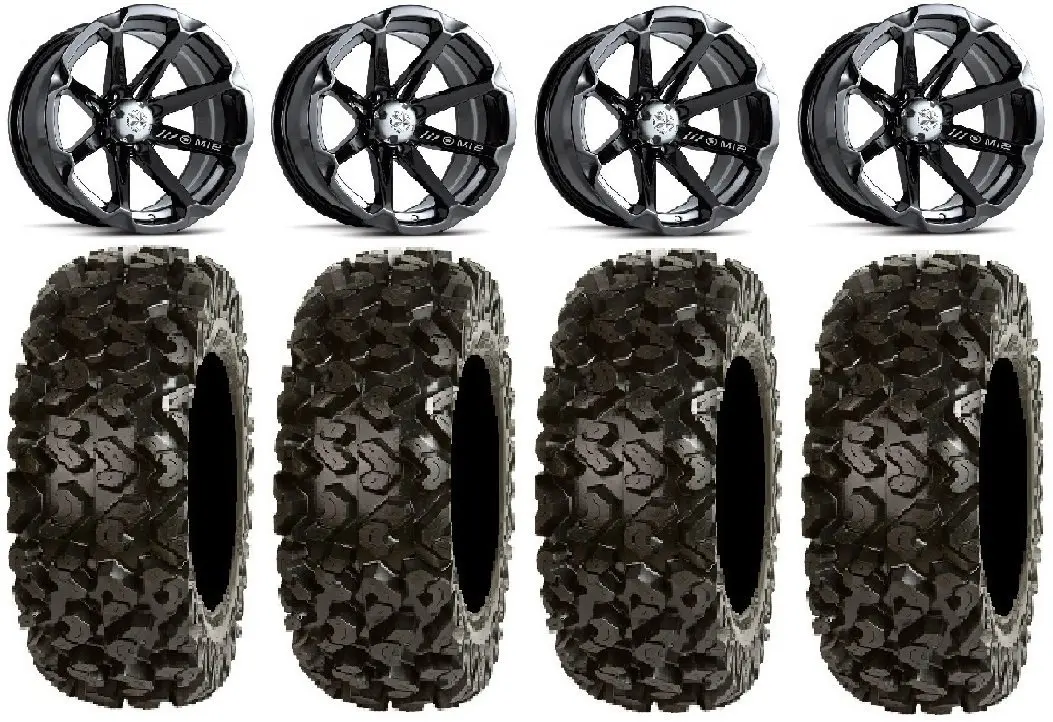 His model earned an A—and launched an entire new type of powersports vehicles!
His model earned an A—and launched an entire new type of powersports vehicles!
After graduation, Plessinger approached various farm machine companies, Harley-Davidson, AMF, and other companies with the hopes of selling the patents and design rights. A company named Sperry Rand (now called Unisys), which was a Special Products Division of New Holland, was the most interested and best fit for the inventory. Part of what they liked is that Plessinger kept careful records of the mistakes he made along with ten different prototypes. This information helped speed up the process of getting the product to market and the Sperry-Rand Tricart began being manufactured in 1968.
During this time, snowmobiles were rapidly selling at about a million units a year. But they could only be used in the winter. Enter: the Tricart, which became the first year-round vehicle. The Tricart also enjoyed a few other claims to fame, including:

The success of the Tricart prompted many powersports manufacturers to get to work crafting their own models.
In 1970, Honda was the first powersports manufacturer to follow up the Tricart. They debuted the three-wheeled US90 with a 7hp engine alongside the ATC90, which was designed for kids. Their ATV was used in the movie Diamonds Are Forever and the TV shows Magnum, P.I. and Hart to Hart, which helped boost its popularity.
Honda continued innovating their product line over the coming years. In 1981, they released the first high-performance three-wheeler with full suspension and five-speed transmission. The model, the ATC250R, took inspiration from motocross technology. In 1982, Honda released the first utility three-wheeled ATV: the ATC200E.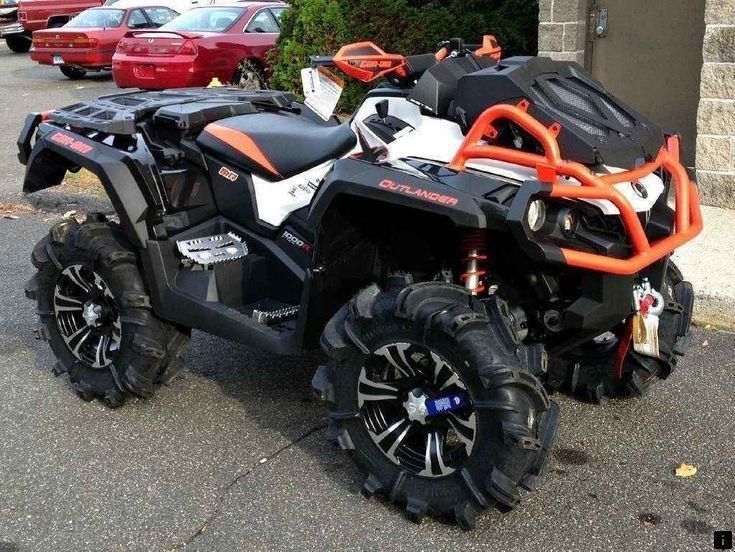
During this time, other manufacturers competed to develop their own ATVs. Companies such as Yamaha and Kawasaki built impressive models, but Honda continued to hit many of the industry's firsts. All of these early models were three-wheeled designs.
The first four-wheeler emerged in 1982. The Suzuki® QuadRunner LT125 sported an extra wheel alongside an odometer, five forward speeds, and a reverse speed. This innovative design offered improved performance and safety and other ATV manufacturers quickly followed suit.
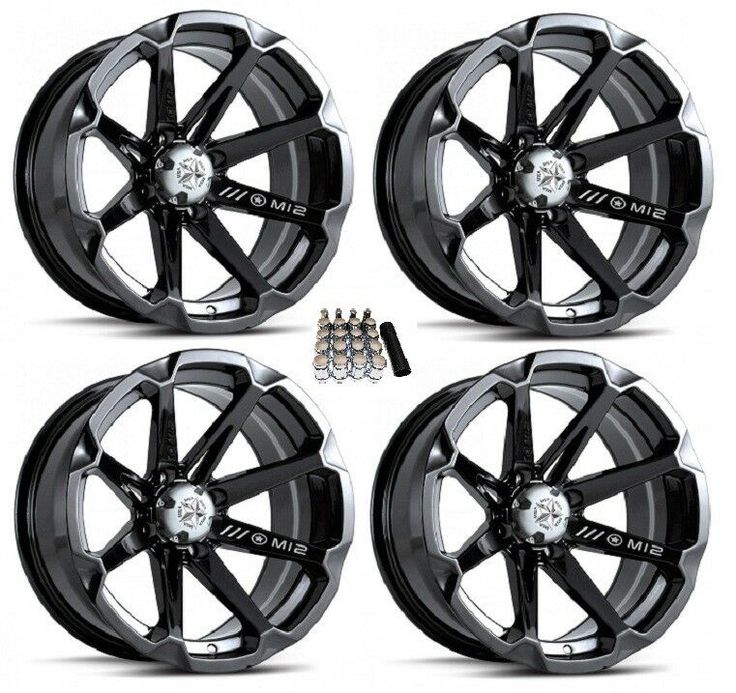
Today, four-wheelers build upon this rich history to offer exceptional riding experiences. Quads are used for recreational riding, work projects, and everything in-between. Riders of all ages can enjoy the thrill of ATV riding.
Ready to shop quads for sale? Check out the selection at Langston Motorsports. Our dealership is based in Perris, California. We also proudly serve those in Temecula and Orange County, California.
A four-wheeler is an SUV by definition, which means that tires for a ATV are the most important part that ensures its flotation. Going to conquer the next track, you must be confident in your four-wheeler.
Whether racing or riding a quad over rough terrain, you can count on a safe and comfortable ride. Experienced riders know that only high-quality ATV tires can provide maximum comfort and safe handling of this exciting vehicle. nine0005
Given the fact that the ATV was originally destined to conquer the off-road, manufacturers shoe SUVs in tires that provide confident driving on hard dirt roads. Naturally, a car on such wheels can also zip along the highway, although driving on public roads for most models is prohibited by traffic rules.
Even if you are not a professional athlete, you are unlikely to resist the temptation to conquer the viscous wetlands, or test the quad in liquid mud to evaluate its ability to overcome impassable areas. After all, that's what you bought the SUV for. Is not it? And if so, then it is clear that ordinary quad tires are of little use for sorties into the area, replete with deep puddles filled with viscous mud. It's time to think about equipping your ATV with real mud tires. nine0005
After all, that's what you bought the SUV for. Is not it? And if so, then it is clear that ordinary quad tires are of little use for sorties into the area, replete with deep puddles filled with viscous mud. It's time to think about equipping your ATV with real mud tires. nine0005
Real mud tires, unlike standard tires, have larger lugs that can bite into loose soil or sand. The tread, in the form of a discharged Christmas tree, resembles a pattern on tractor wheels. The diameter of such tires is increased and, depending on the model, ranges from 25 to 34 inches.
The most sought after ATV tires are between 26 and 28 inches as they fit most ATVs without any suspension modifications. The width of the cross-country tires is slightly larger than the standard tires, and the width of the front and rear tires is different. This allows the front tires to follow their own path, while the rear tires follow a slightly different path, gripping the curb and allowing you to go a lot further. nine0005
nine0005
Under normal operating conditions, the main parameter that affects the stability and handling of the ATV is the crown - the tread area in contact with the road surface. The larger the contact patch, the better the handling on firm ground. Therefore, if you are a fan of high speeds, like to maneuver and ride on rough terrain full of hard dirt roads, forest rolled roads, as well as any other hard ground, choose tires with a radial cord construction (example 1, example 2, example 3). Also, the radial design of the cord very well fulfills the bumps that can get in your way, a protruding tree root, stone or something else, the radial design will allow you to overcome this bump in the most comfortable way! nine0005
ATV wheels require softer, lighter rubber for maximum road contact and traction to confidently tackle swampy terrain.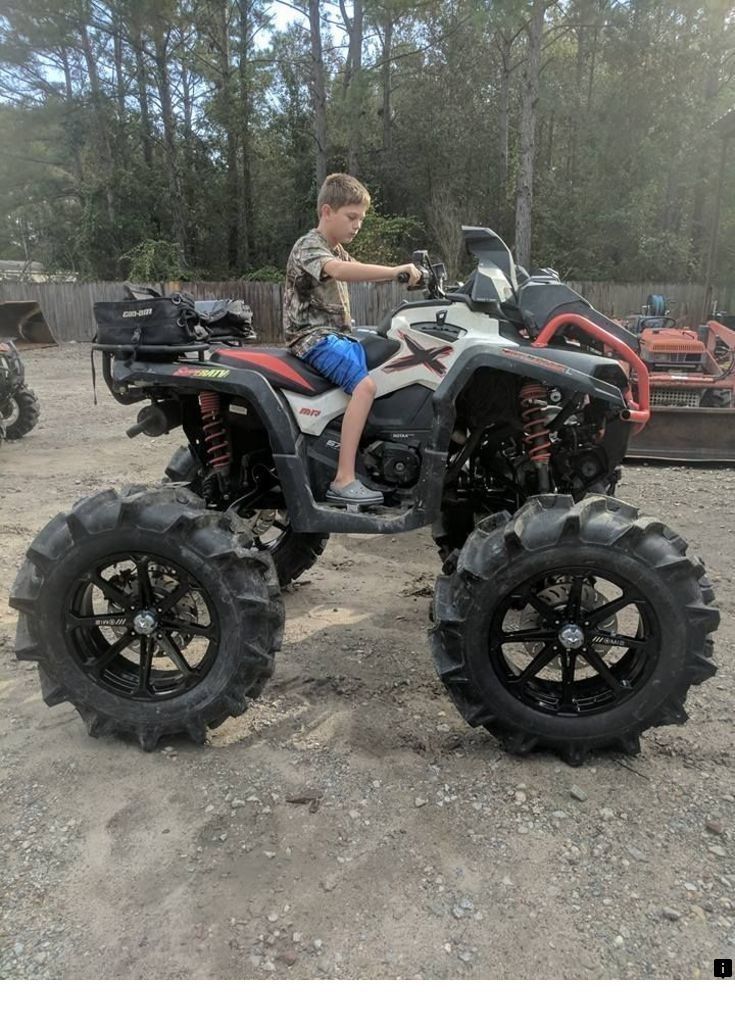 Cross-country ability is enhanced by a special tire design. An important role belongs to the lamellas, which have a peculiar shape and optimal height. The ability of the lugs to self-clean is very important, since the adhering dirt greatly complicates the patency on loose soils. Sidewall strength is also important for mud tires. Passing elastic wheels on deep ruts is associated with the risk of damage. The presence of strong sidewalls minimizes such risks. nine0005
Cross-country ability is enhanced by a special tire design. An important role belongs to the lamellas, which have a peculiar shape and optimal height. The ability of the lugs to self-clean is very important, since the adhering dirt greatly complicates the patency on loose soils. Sidewall strength is also important for mud tires. Passing elastic wheels on deep ruts is associated with the risk of damage. The presence of strong sidewalls minimizes such risks. nine0005
The diameter of the tires affects the ground clearance of the all-terrain vehicle, the increase of which increases its cross-country ability. The width of the tire changes the area of its contact with the road. Wider profiles sink less into soft and loose surfaces, helping you to move confidently through the mud.
When choosing tires for an ATV, you should proceed from the expected conditions of its operation. Ideally, tires should provide comfortable driving, both on hard dirt roads and in mud. However, in practice it is impossible to achieve such results. Different manufacturers solve this difficult problem in their own way. In principle, all solutions come down to the creation of rubber optimized for use on a certain type of road: solid dirt tracks, or loose soils, mud, sand, grass. There are also all-purpose tires that provide average performance on different surfaces. nine0005
|
|
| DAKAR 2016. SERGEY KARYAKIN IN THE QUAD CATEGORY. |
The well-known American manufacturer ITP has succeeded in creating the perfect tire. It is by far the #1 tire and rim brand in its class. ITP products are known and bought by professional riders and extreme sports enthusiasts all over the world. Our well-known compatriot driver Sergey Karyakin participated in the Paris-Dakar race on tires with ITP rims. The ITP range includes the following tire types:
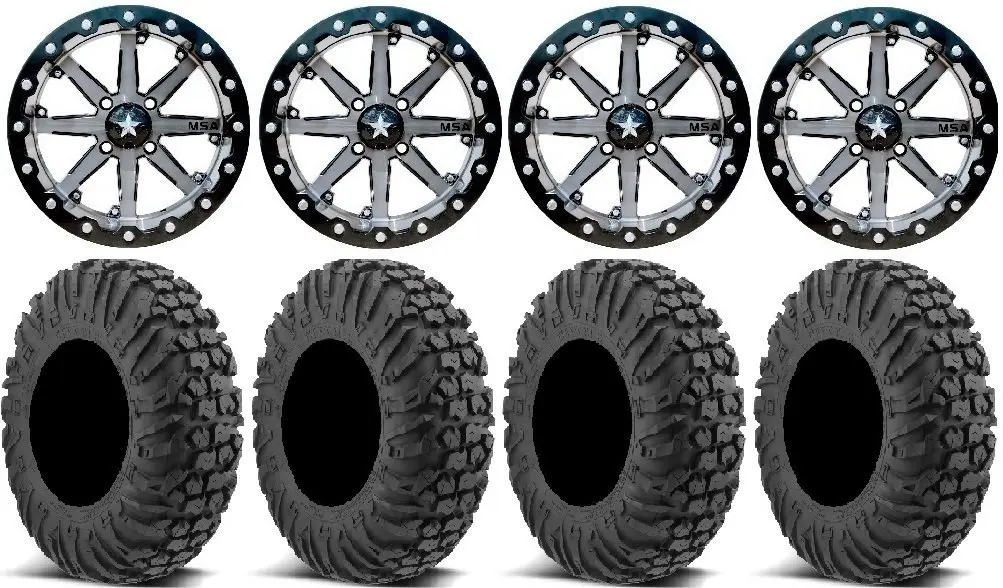
ITP tires are produced exclusively in the USA, which is an additional guarantee of their high quality.
The softness of ITP tires is superior to all known brands. But this indicator is very important for off-road driving. In an effort to find the best properties for different roads, ITP tire developers create tires for all conditions of use, creating new and unique treads that can cope with their tasks on any type of surface. nine0005
The main advantages of ITP tires include:
Just to add, ITP also makes excellent rims for the ATV in various sizes, including beadlock and reversible beadlocks. The discs are made of durable aluminum alloy and are lightweight and stylish. They are compatible with sport and utility models of modern ATVs. nine0005
ITP wheels are produced using an original casting technology that provides them with an enviable resistance to deformation and cracking. In the US, ITP provides a lifetime warranty on its discs. The polished surfaces of these wheels go well with the matte color of the tires and give the SUV a touch of special drive.
In the US, ITP provides a lifetime warranty on its discs. The polished surfaces of these wheels go well with the matte color of the tires and give the SUV a touch of special drive.
Equipping your ATV with ITP wheels and tires, you can safely conquer the most difficult tracks on it. It is by far the #1 brand for ATV tires and rims. nine0005
From time to time the quad is acting up and not behaving as you would like. Nothing beautiful lasts forever, right?
One of the most common problems you may encounter is the ATV suddenly pulling to the left or right.
If you are lucky, your problem may have a simple solution)
Let's take a look at some of the most common causes of ATV pulling to the side, and of course, we'll talk about how to get rid of these problems here.
The most common problem that causes the ATV to pull to one side is the difference in rolling resistance due to different tire pressures.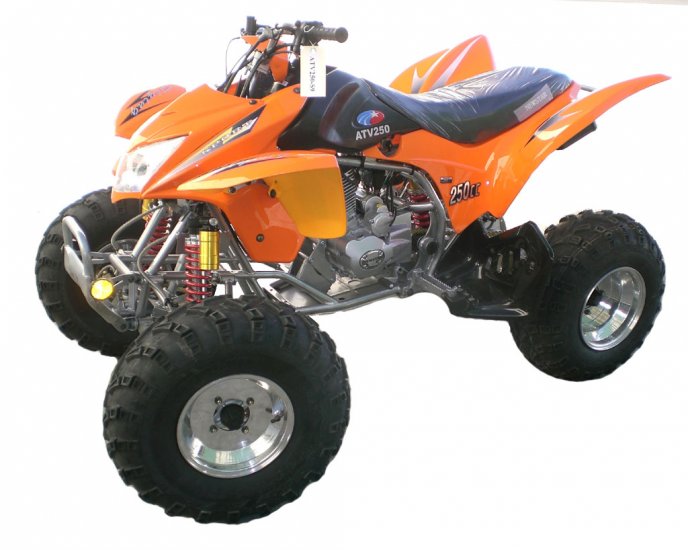 Also, the problem may be associated with natural wear or damage to various components of the chassis of the ATV and, as a result, a violation of the angle of the wheels. nine0005
Also, the problem may be associated with natural wear or damage to various components of the chassis of the ATV and, as a result, a violation of the angle of the wheels. nine0005
So how do you determine what is causing problems when riding an ATV?
As you probably already understood, there can be several reasons.
To understand why an ATV wants to pull off the road and dive into a ditch when you really don't want to, you need to do a number of checks.
Although I don't have exact statistics to tell you which malfunction occurs most often, I still recommend that you start with what is easiest to check and fix before spending time and money on more unusual and potentially more complex searches. nine0005
In my experience, the most common cause, and by far the easiest problem to check and fix, is uneven ATV tire pressures.
Let's look at what happens when ATV tires have different pressures.
A flat tire has a larger area of contact with the road surface than a normally inflated wheel, as a result of which the friction force, and hence the rolling resistance force, applied to such a wheel will be higher. The wheel will roll more slowly. The opposite wheel will run ahead and try to turn the ATV around the slow wheel. That is, if the ATV pulls, for example, to the left side, most likely, the fact is that the left wheel is lowered. nine0005
To solve this problem, you need to equalize the air pressure in the ATV tires. It is best to refer to the operating instructions, which must indicate the required air pressure in the wheels recommended by the manufacturer. The pressure in the wheels installed on the same axle of the ATV must be the same.
At the same time, you should be aware that due to the design features and weight distribution of the ATV, the tire pressure on the front and rear axles may differ. nine0152 MOTAX and YACOTA have such sensors in the standard tool kit. If there is no such device in your kit, I recommend that you definitely purchase it. A very slight difference in air pressure in the tires may well be the reason that the ATV pulls to the side when driving in a straight line.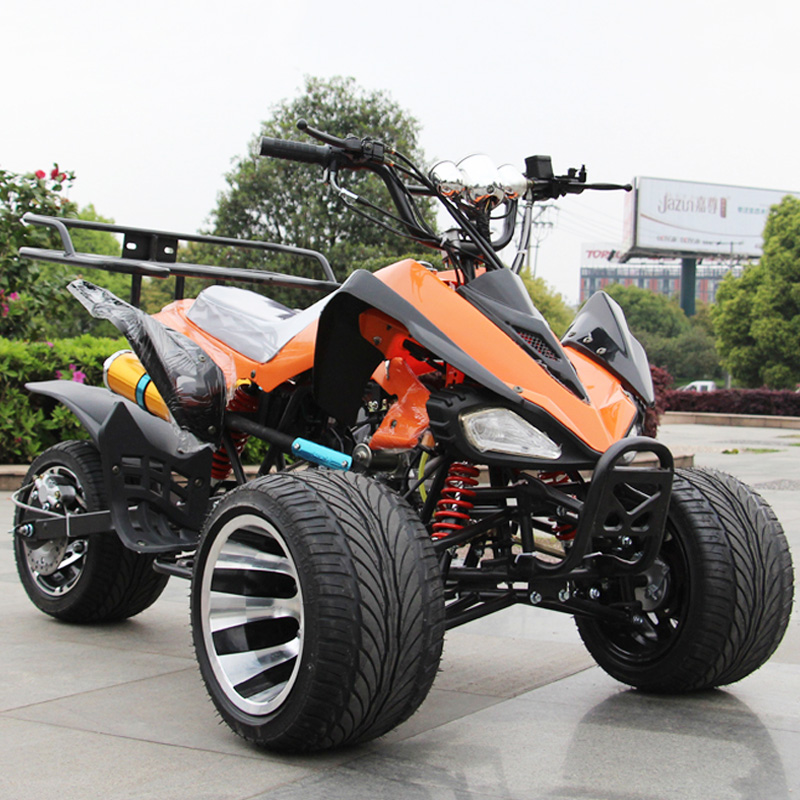
The air pressure should be checked in both front and rear tires. True, uneven pressure in the rear tires, most likely, will not be the reason for the withdrawal of the ATV from a straight path. Different pressure in the rear tires can provoke another malfunction - premature wear of the rear differential, due to the increased load on it. But this is a story for a separate review. nine0005
I always keep this inexpensive instrument in my toolbox, its accuracy is good enough to use.
Also make sure that the maximum tire pressure is not exceeded.
Over time, ATV wheels can wear at different rates, resulting in the diameter of one wheel being different from the diameter of another wheel. This can also cause the ATV to pull to the side.
To check if the front wheel diameters are the same, you can do a simple check: place the ATV on a flat surface and use chalk to make a mark on the sidewall of each front tire at the lowest point. nine0005
Wheels must be pointing straight ahead, gear lever in neutral position.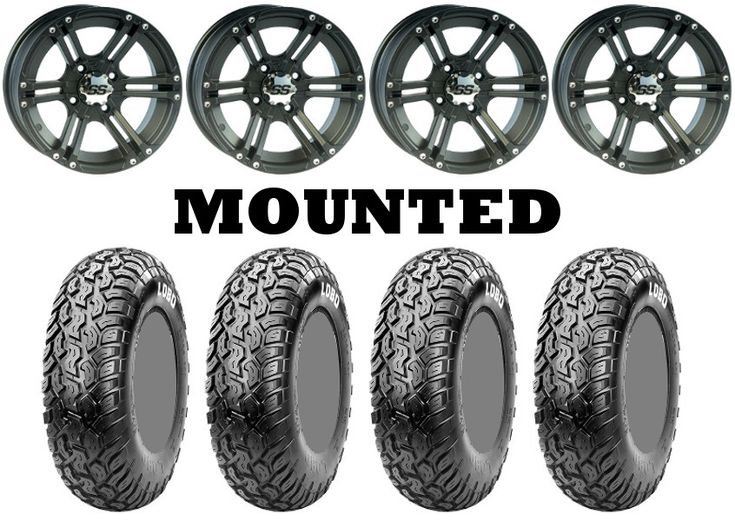 Roll the ATV forward until one of the wheels has made two or three revolutions and the mark you just made is back to the very bottom, to its original position. Look at the mark on the opposite tire. Ideally, it should also be at the very bottom. If this is not the case, the wheel circumferences do not match.
Roll the ATV forward until one of the wheels has made two or three revolutions and the mark you just made is back to the very bottom, to its original position. Look at the mark on the opposite tire. Ideally, it should also be at the very bottom. If this is not the case, the wheel circumferences do not match.
If the reason for the ATV pulling to the side lies in the difference in wheel circumference, then when driving to the right, the right tire should have a smaller circumference, and when driving to the left, the left one. nine0005
The circumference of the wheels can differ not only due to uneven wear, but also due to the difference in air pressure in the tires.
The wheel is like a balloon, the higher the pressure, the larger its diameter and vice versa.
For this operation, you need to lift the ATV, place it steadily on the supports so that all the wheels are in a suspended state.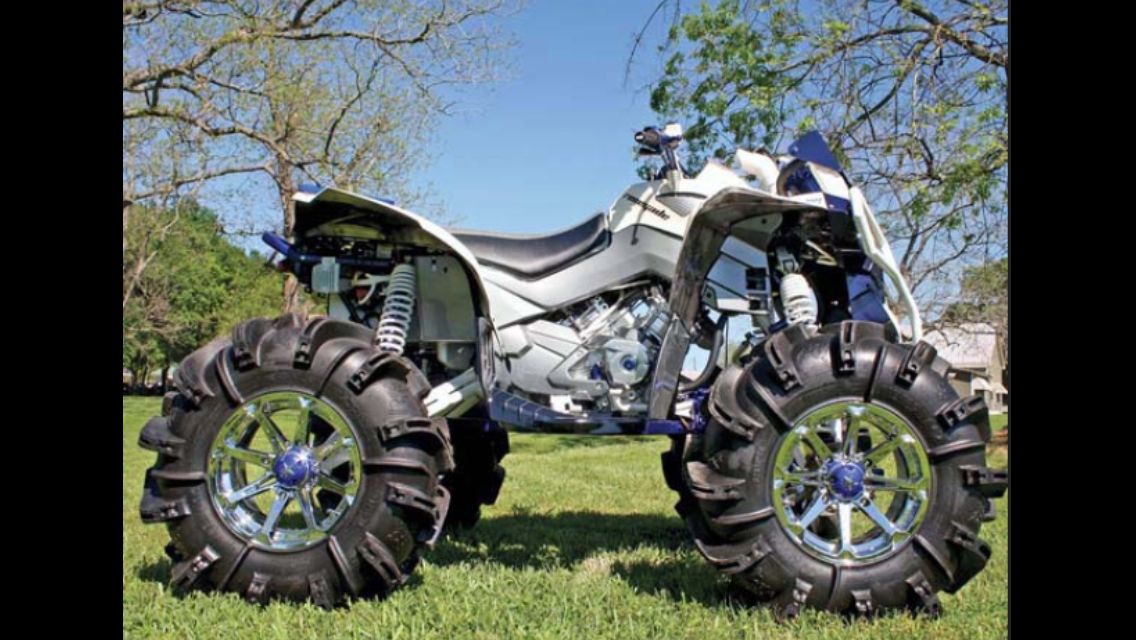
It is very convenient to use motorcycle stands to lift the ATV. If you do not have them yet, and you plan to service the ATV yourself, I recommend purchasing them. They are relatively inexpensive. Tackles will greatly simplify the ATV maintenance process. nine0005
Check that there is no excessive play in the ATV suspension and steering joints. Start with the tie rods and steering rack. This operation is more convenient to carry out with an assistant. Have an assistant move the ATV handlebars to the right and left, often and with a small range of motion. And you, in turn, keep your hand on the swivel, which are subject to verification. Check the steering tips and tie rods one by one. You will feel the excess play in the hinge with your hand. If the ATV steering wheel has excessive play, but the tie rod and steering tip are in order, then the steering rack itself or the steering shaft bushing may have play, which can also be checked by hand. The steering column bushing usually wears out over time.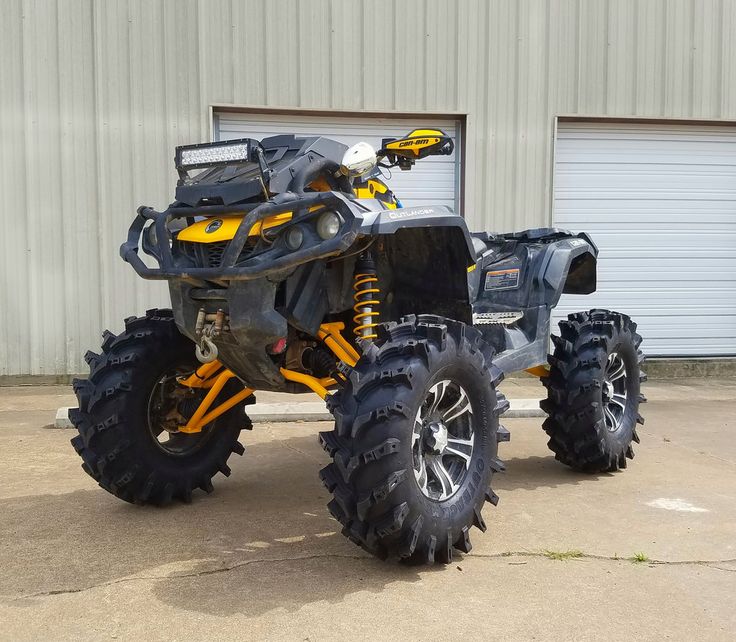 The same goes for the ball joints on the tie rods. nine0005
The same goes for the ball joints on the tie rods. nine0005
Tighten any loose bolts and replace worn parts. Worn parts can break soon, so replacing them won't be a waste of money, even if their wear isn't the reason your ATV pulls to the side.
In addition, the wheel bearings must be checked for excessive play.
To do this, have a helper take the top and bottom of the wheel and shake it while you check for play in the ball joints and wheel bearings. nine0005
Check how easy the wheels turn. The wheels should rotate freely, without noise and crackling. The presence of noise indicates wear on the hub bearing. And the tight running of the wheel is about bearing wear or souring of the brake pads. As we said, if one of the ATV's wheels is spinning at a slower speed than the other wheel, the ATV will pull towards the slow wheel.
If necessary, replace the bearings and service the front brake calipers. Sometimes the caliper is easy enough to clean, and sometimes you can’t do without replacing the brake cylinders or the caliper bracket itself.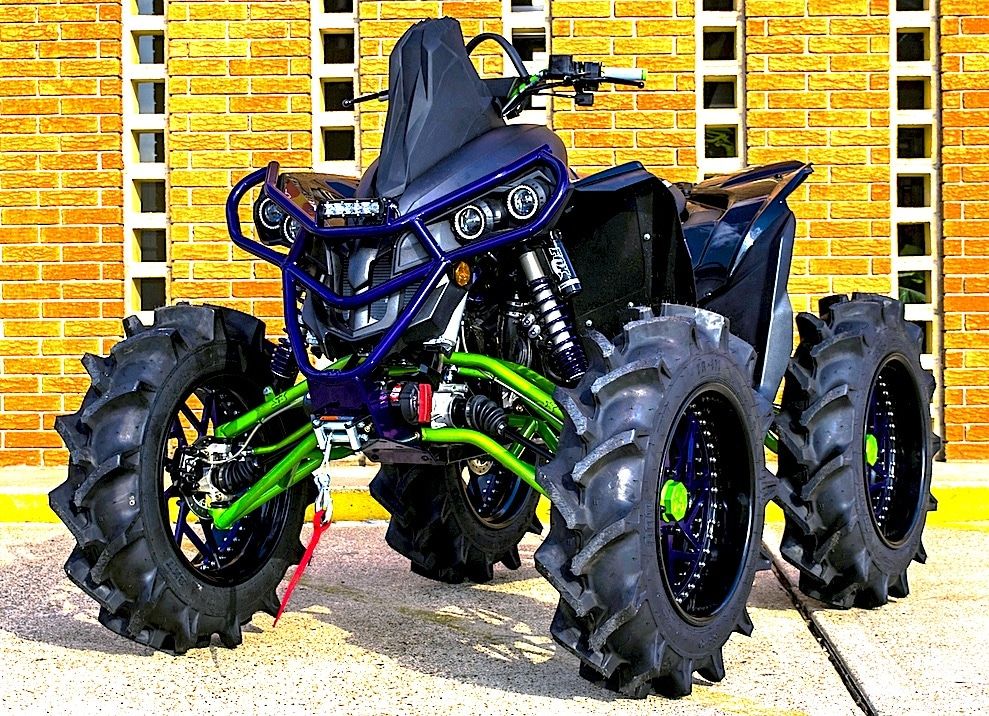 nine0127 Complete the work with suspension lubrication. The running gear of ATV brands YACOTA , MOTAX , AVANTIS is equipped with special grease fittings through which you can easily lubricate the desired suspension unit. We have already told, in one of the reviews, on the example of a gasoline 125 cc ATV MOTAX T-REX about the features of maintenance of the ATV suspension. Regular maintenance of your ATV will definitely prolong its life. nine0005
nine0127 Complete the work with suspension lubrication. The running gear of ATV brands YACOTA , MOTAX , AVANTIS is equipped with special grease fittings through which you can easily lubricate the desired suspension unit. We have already told, in one of the reviews, on the example of a gasoline 125 cc ATV MOTAX T-REX about the features of maintenance of the ATV suspension. Regular maintenance of your ATV will definitely prolong its life. nine0005
Control check three: check the running gear for geometry violations.
If you use the ATV for active riding or sports, then it is possible that you have bent some part of the suspension on the next jump. ATV front suspension A-arms are especially prone to damage if you hit a stump or rock while riding. "Fast-growing" trees suddenly appearing in front of the ATV as you drive, a common story!)
A-arms are designed to absorb heavy suspension shock and, through their integrity, retain more expensive and hard-to-find ATV parts that are more difficult, more expensive or even impossible to repair, for example, an ATV frame. It is not always easy to see if the suspension arm is bent or not. It happens that the levers do not have a symmetrical shape, because the ATV suspension was originally designed this way by the manufacturer. nine0005
It is not always easy to see if the suspension arm is bent or not. It happens that the levers do not have a symmetrical shape, because the ATV suspension was originally designed this way by the manufacturer. nine0005
Compare the distance between the axles of the front and rear wheels of the ATV on the right and left sides. If there is a difference, then one of the suspension arms is most likely damaged.
The camber and toe angle can be adjusted by eye yourself, but it is better to contact specialists who have the necessary measuring equipment and data on the required wheel alignment values.
I hope you find this article useful.
For all questions related to the purchase, selection and repair of ATVs and other equipment presented in the VEZDEHOD online store, please contact our consultants. We will be happy to help you choose a new ATV according to the specified parameters and solve any technical issue related to the malfunction of already purchased equipment.